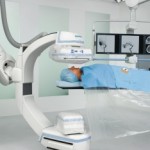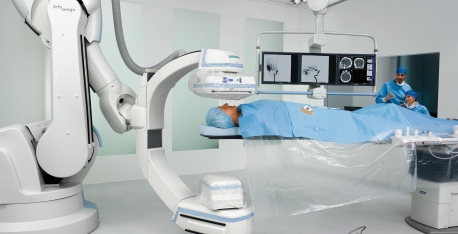 Radiation exposure has long been a concern to Radiologists and their assistants. Lead aprons, thyroid shields and more recently leaded eyeware have reduced their exposure to radiation. Anesthetists are frequently assigned to sedate / anesthetize patients in the interventional radiology suite. Like the Radiologist, the anesthetist is exposed to radiation danger.
Radiation exposure has long been a concern to Radiologists and their assistants. Lead aprons, thyroid shields and more recently leaded eyeware have reduced their exposure to radiation. Anesthetists are frequently assigned to sedate / anesthetize patients in the interventional radiology suite. Like the Radiologist, the anesthetist is exposed to radiation danger.
In a study by Anastasian, ZH, et al published in Anesthesiology, the facial exposure to radiation was compared between the Radiologist and the Anesthetist. Both providers wore lead aprons. The Radiologist wore leaded eyeglasses and stayed behind a leaded acrylic shield to the extent possible. The Anesthesiologist also was instructed to stay behind a leaded shield to the extent possible and to keep maximum distance from the source of radiation.
The authors of the study demonstrated that the Anesthesiologist had a 3 fold increase in facial exposure to radiation than did the Radiologist, thus increasing the risk of developing cataracts. Exposure of the Anesthesiologist was correlated to the number of pharmacologic interventions performed during the case.
The best ways to reduce exposure to radiation are distance and shielding. Lightweight leaded eyeglasses reduce exposure of the cornea by 98% and are recommended for those spending significant time administering anesthesia for interventional radiology
Click here to review the work by Anastasian, ZH et al.
Please return to this site and leave a comment
